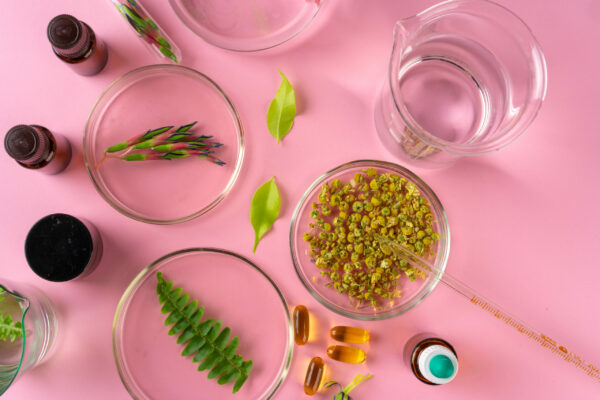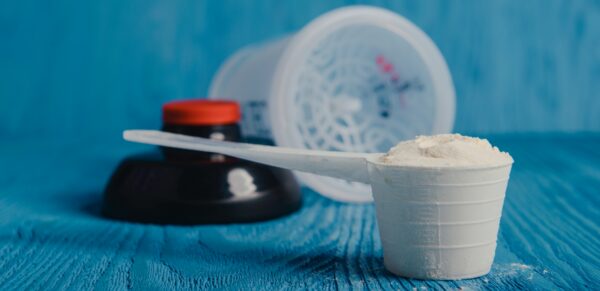How to innovate in nutricosmetics?

Are you considering developing beauty-related dietary supplements? This article will help you choose the right positioning and the best ingredients in a dosage form that ticks all the right boxes for a successful nutricosmetics product.
First, identify the right market positioning
Success stories always share one key feature: consumers are drawn to products with good positioning. It’s all about meeting their expectations with a clear offer. According to the Mintel 2018 study, in Brazil 40% of consumers are interested in dietary supplements that combat ageing, or are good for the hair, nails or skin. The same study found that the French and Italians look for anti-ageing properties in their nutricosmetics supplements, whilst the German and Spanish prefer products with skin beauty claims.
Some brands take the strategic angle of specialising in problem skin: Acne, atopic dermatitis, eczema, dryness, redness, etc.
Secondary benefits can be linked to the main claim made by the product. Benefits can thus be combined: “Purify & energise your complexion”,”mind & beauty” or “anti-stress & beauty effects”, “detox & beauty”, “healthy glow & protection against free radicals”, “anti-wrinkle & antioxidant”, “moisturising and toning”, etc.
A concept backed by efficacy tests
Product positioning and therefore the promises it makes must be based on using tested, recognised ingredients, or on proven efficacy. Back your claims with the scientific studies carried out by your ingredients supplier. You can also perform an efficacy study, or even a clinical trial, on your product. You alone will benefit from the results, but bear in mind that these studies do not come cheap.
Beauty ingredients
Two flagship ingredients: Collagen and hyaluronic acid
Collagen and hyaluronic acid are the two superstar ingredients in the nutricosmetics constellation.
Hyaluronic acid has excellent skin moisturising properties. It retains moisture in the tissue, soaking it up like a sponge. It can soak up and retain up to 1,000 times its own weight in water. It is also highly beneficial for skin healing.
Collagen is a protein extensively found in the skin. It not only provides firmness and structure, but also moisturises like hyaluronic acid. Collagen also plays a part in skin healing. Collagen is even used in some hospitals to treat major burns and help them heal faster! Collagen sources can be bovine, porcine, marine or fowl. For combatting wrinkles, the collagen most extensively used in nutricosmetics is type I fish-origin collagen. You may have heard of “vegan collagen”, but beware, there is no such thing. No collagen molecules per se exist in the plant world. The term refers to a group of plants that contain some of the molecules that make up collagen. In other words, they contain glycoproteins with similar properties to animal-origin collagen.
Other ingredients of interest for nutricosmetics
Formulators at JLB Développement share their experience and the latest ingredients for your formulations:
More than 50% of our epidermis is made up of ceramides. Ceramides are lipids that occur naturally in the skin. They are essential for moisturising and strengthening the skin barrier. Robertet offers a phytoceramide product called Lipowheat.
Plant extracts, such as acerola extract rich in natural vitamin C, cranberry extract with its claim of protecting against the damaging effects of oxidative stress and free radicals on the skin, vine extract or pomegranate extract with antioxidant properties, pine extract for skin elasticity or for reducing age spots.
Anti-inflammatory turmeric, already a known component of dietary supplements, is now being found in nutricosmetics as well.
Aloe vera is valued for its healing and moisturising effects.
Co-enzyme Q10, much used in cosmetics, is being developed for use in high-end dietary supplements.
Vitamins A, C, E, B6, B12, B3 (niacin), B5 (pantothenic acid) and B9 (folic acid) are used for their direct and indirect effects on skin metabolism.
Trace elements zinc and selenium, for their antioxidant properties.
Superfoods, rich in polyphenols and antioxidants, found in the health foods market: mangosteen, kaki, baobab, camu, maté, hibiscus, matcha tea, acai berries and moringa leaves.
Essential oils are also used in formulations. Essential oil of Egyptian geranium, for example, is recommended for problem skin (red patches or blemishes). For its part, essential oil of rosewood has anti-aging properties. Essential oil of Bourbon geranium is recommended for toning the skin and smoothing away blemishes. Lastly, essential oil of turmeric is antioxidant and helps slow down skin aging.
Another way of achieving differentiation is product texture
For dietary supplements in liquid form (liquid, purée, gel, etc.) and presented in single-dose, shot, or drink format, JLB DEVELOPPEMENT formulators recommend you consider texture, too. One interesting area to look at is superfruits in juices, purées or compotes, which make your liquid formulas tasty, colourful and natural.
Be practical when choosing the right dosage form
Well done! Once you have defined your product positioning and claims, based not only on effective ingredients and trends but also tests, you then need to decide on its dosage form.
Dosage forms tailored to your concept
The format you choose has to align with your concept. Your choices will naturally be different according to whether your positioning focuses on premium, 100% natural, fun or technical aspects. There is a wide variety of formats, ranging from the better-known, such as capsules, to the more unusual, such as gummies, sticks or flasks.
Dosage forms tailored to the formulation
Your formulation will sometimes be instrumental in steering you towards your dosage form. For miscible dry blends, sachets or sticks may be appropriate, or even tablets. Prefer liquids? Then shot or single-dose formats are ideal. An oily or lipophilic blend? Capsules are a good choice here. JLB DEVELOPPEMENT project managers will be at your side during all stages of your product development, even advising you on possible dosage forms.
Creating offshoots by diversifying the dosage form
Another lever of innovation that can be used in nutraceutics comes from the world of drinks products. For example, a brand can use the symbolism of drinks like tea, fruit juices, superfruit smoothies or instant drinks, etc., and couple them with a beauty-related claim. This strategy works well either as an offshoot of or complement to multi-benefit ranges. For example, a brand of functional drinks marketed for detox, digestion or energy purposes could complete its range with a beauty drink.


